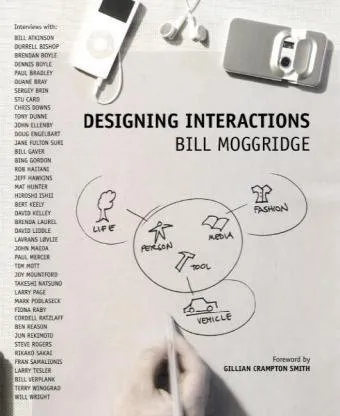Designing Interactions
4.7
Reviews from our users

You Can Ask your questions from this book's AI after Login
Each download or ask from book AI costs 2 points. To earn more free points, please visit the Points Guide Page and complete some valuable actions.Related Refrences:
Welcome to the world of interaction design, a discipline that sits at the intersection of technology, design, and human behavior. My book, Designing Interactions, was crafted to shed light on the fascinating evolution of user-centric design and how it has shaped the way we experience technology today. This introductory overview provides a thoughtful glance into the core ideas, key takeaways, and relevance of the book in today’s digital-first world.
Detailed Summary of the Book
Interaction design has transformed how we engage with the ever-growing universe of digital interfaces, tools, and devices. Designing Interactions chronicles the work of some of the most brilliant designers and technologists, diving deep into their real-world projects to unveil the iterative process and decision-making behind iconic designs. The book presents interviews with pioneers like Doug Engelbart, creator of the computer mouse, and Larry Tesler, who introduced copy-paste functionality, among others. Through these narratives, the book traces the evolution of interactive technologies, from the earliest graphical user interfaces (GUIs) to modern mobile devices and beyond.
The structure of the book juxtaposes storytelling with thoughtful analysis. It enlists a historical perspective on design innovations such as the development of the desktop metaphor, the rise of the Internet as an interactive medium, and the impact of iterative prototyping in refining design solutions. Each chapter integrates insightful anecdotes, real-world examples, and theoretical frameworks, offering readers a blend of inspiration and practical knowledge.
Key Takeaways
Here are some of the most important lessons from Designing Interactions that resonate with designers, technologists, and innovators alike:
- The best designs emerge from a deep understanding of user behavior and human needs.
- Iterative prototyping is a powerful tool in refining and improving interaction design.
- Collaboration across disciplines—integrating design, engineering, and behavioral sciences—leads to groundbreaking innovations.
- Design is never static; it must evolve as technology, culture, and societal expectations shift.
- Simple, intuitive interfaces have the potential to create profound emotional connections with users.
Famous Quotes from the Book
- "Good design is about making decisions that are meaningful, delightful, and empowering to those who use it." – From Chapter 1
- "It is in testing ideas, even when they're wrong, that breakthrough designs emerge." – From Chapter 4
- "The story of human-centered design is a reflection of our ongoing desire to better understand ourselves." – From the Introduction
- "Interaction design is not just about usability; it's about creating moments of connection and value." – From Chapter 8
- "The future of interaction design lies in shaping technology, not merely responding to it." – From the Conclusion
Why This Book Matters
At its core, Designing Interactions matters because it documents a pivotal chapter in human history where design and technology began to merge in extraordinary ways. The book is not just an exploration of how devices came to be; it also serves as an inspiration for anyone seeking to push the boundaries of design, from budding students to seasoned professionals. By illustrating the process, challenges, and triumphs of legendary interaction design projects, it encourages curiosity, reflection, and experimentation.
Moreover, the relevance of this book has only magnified as industries grapple with the challenges of designing for emerging technologies such as artificial intelligence (AI), augmented reality (AR), and the Internet of Things (IoT). Despite being written years ago, the ideas in Designing Interactions remain timeless because they underscore the critical importance of human-centered thinking—a principle that is more essential than ever in navigating the complexities of modern innovation landscapes.
In short, this book is a celebration of the designers who shaped the digital products we use today, as well as a roadmap for the designers of tomorrow. It’s a must-read for anyone who wants to better understand what it means to design experiences that not only function but also inspire and delight.
Free Direct Download
You Can Download this book after Login
Accessing books through legal platforms and public libraries not only supports the rights of authors and publishers but also contributes to the sustainability of reading culture. Before downloading, please take a moment to consider these options.
Find this book on other platforms:
WorldCat helps you find books in libraries worldwide.
See ratings, reviews, and discussions on Goodreads.
Find and buy rare or used books on AbeBooks.
1158
بازدید4.7
امتیاز0
نظر98%
رضایتReviews:
4.7
Based on 0 users review
Questions & Answers
Ask questions about this book or help others by answering
No questions yet. Be the first to ask!

![Unleashing the Power of UX Analytics: Proven techniques and strategies for uncovering user insights [Team-IRA] [True PDF]](https://s3.refhub.ir/images/thumb/Unleashing_the_Power_of_UX_Analytics__Proven__9372.webp)











